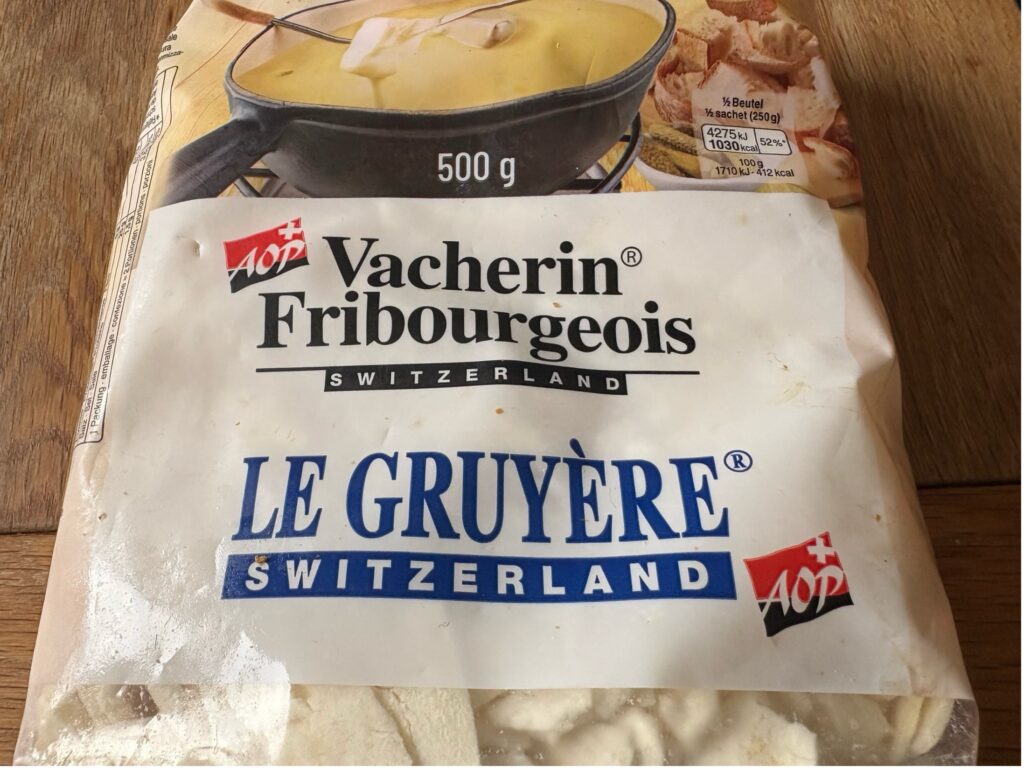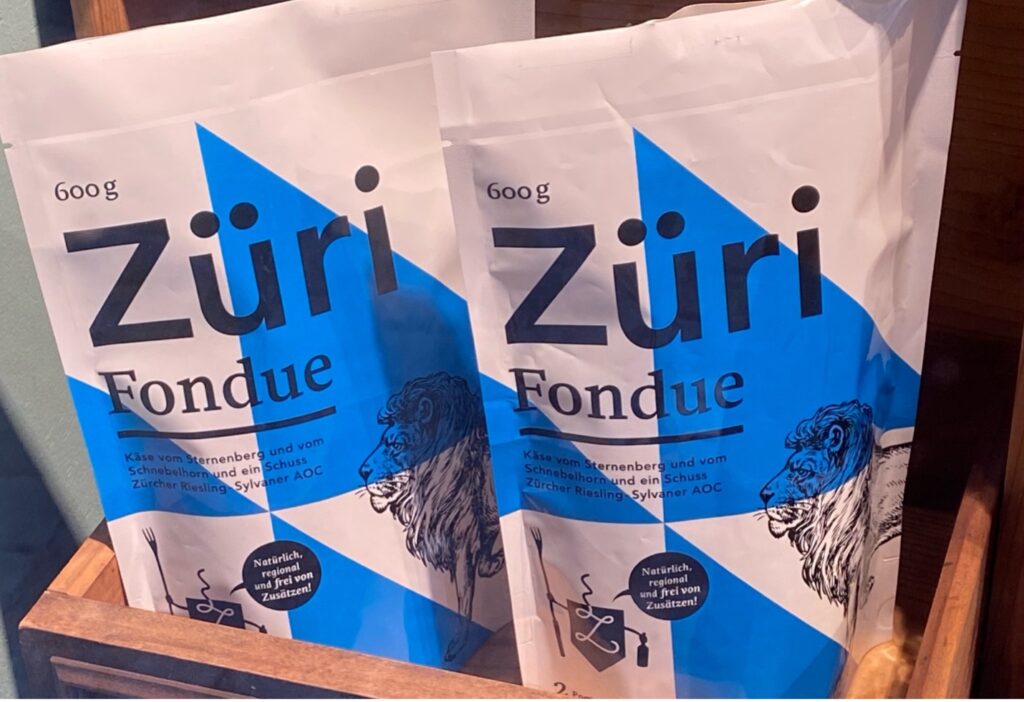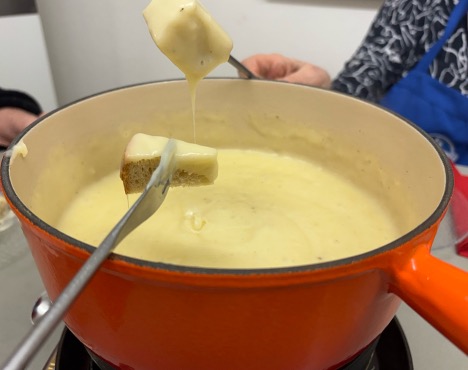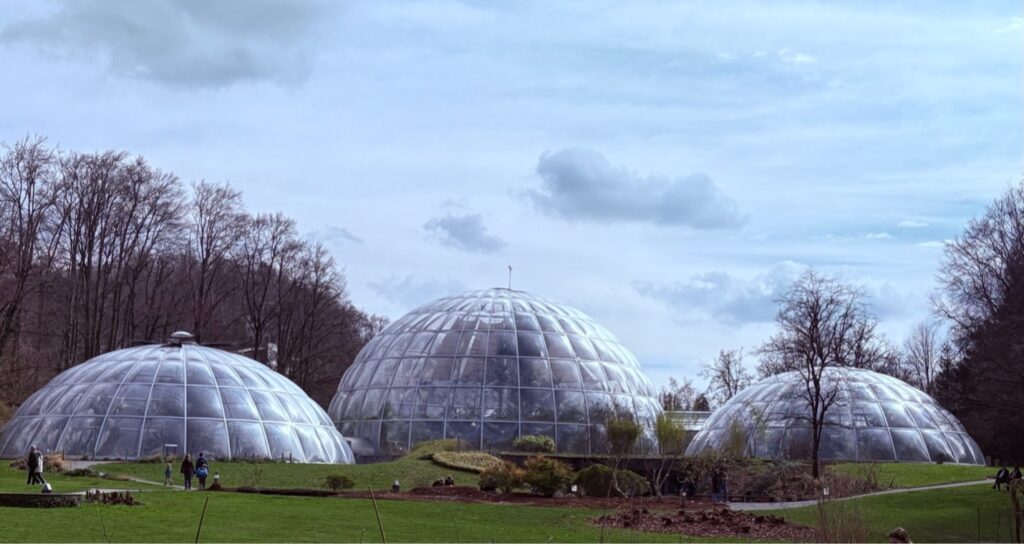Table of Contents
ToggleAh, Swiss cheese fondue. If you ask me, there’s nothing better than gathering around a steaming pot of melted cheese on a cold winter evening, dipping in a piece of crusty bread, and savoring that perfect, gooey bite. For me as a Swiss, fondue isn’t just food—it’s tradition, comfort, and a social event all wrapped into one delicious, cheesy package.
A Bit of Cheesy History
Like many great things in life, fondue has humble beginnings. The word fondue comes from the French fondre, meaning “to melt,” and its origins trace back to the Western Alps, where Swiss alpine farmers needed a clever way to use up hardened cheese and stale bread during the long winters.
But here’s where things get interesting. Some say medieval monks found a loophole in their fasting rules by melting cheese—because technically, it wasn’t solid food (well played, monks). And then there’s the Swiss legend of the Kappeler Milchsuppe, where Protestant and Catholic soldiers supposedly set aside their weapons during a battle in 1529 to share a simple meal of milk and bread—some say this moment of unity inspired the concept of fondue.
Despite its deep roots, fondue didn’t officially become Switzerland’s national dish until the 20th century. And that’s thanks to the Swiss Cheese Union (yes, they existed and had serious marketing skills). In the 1950s, fondue recipes even found their way into Swiss army cookbooks, and soldiers carried the tradition home. By the 1970s and 80s, an iconic advertising campaign with the slogan “figugegl” (Fondue isch guet und git e gueti Luune—”Fondue is good and creates a good mood”) had everyone huddling around a fondue pot.
Fast forward to today, and fondue is still a staple in Swiss households, ski lodges, and cozy winter gatherings. So next time you’re dipping your bread into a pot of melted cheese, just remember—you’re not just eating a meal. You’re taking part in a centuries-old Swiss tradition that proves once and for all: everything tastes better when covered in cheese.
How to Eat Fondue Like a True Swiss
Fondue isn’t just about dipping bread into melted cheese—it’s a ritual. It all starts with the fondue pot (caquelon): first, rub the inside with a cut clove of garlic to infuse subtle flavor. Then, slowly melt the cheese with white wine, stirring constantly to keep it smooth.
In a small bowl, mix cornstarch with Kirsch until dissolved, then add it to the cheese mixture. Keep stirring until the fondue thickens, then season with nutmeg and black pepper for that final touch.
Once it’s ready, spear a piece of day-old bread (stale bread holds up better) with a long-handled fondue fork, then swirl, don’t stir—that’s the key to coating your bread perfectly without disrupting the melted goodness.
Now, here’s where it gets fun: if you lose your piece of bread in the pot, there are consequences. Traditionally, If a man drops his bread, he has to buy the next round of wine or schnaps. If a woman does, she “gets” to kiss all the men at the table.
Perhaps this is just another reason why fondue remains so popular.
The Grand Finale: The Crispy Treasure at the Bottom
The real highlight of fondue, however, is the crust of toasted cheese that forms at the bottom of the pot as the fondue slowly disappears. In German, we call it the Grossmutter (grandmother), and in French, it’s known as La Religieuse (the nun). Once the cheese is almost gone, we scrape up this golden, crispy layer—it’s the ultimate reward for a well-enjoyed fondue. Some even say it’s the best part of the whole meal, and honestly, I have to agree!
The Many Faces of Swiss Fondue
Not all fondues are created equal. The most famous is Moitié-Moitié (meaning “half and half”), a heavenly blend of Gruyère and Vacherin Fribourgeois, typically enjoyed in western Switzerland.

Then there’s Fondue Fribourgeoise, made entirely with Vacherin and melted with water instead of wine, giving it a milder, creamier texture. Feeling bold? Try Appenzeller Fondue, known for its strong, spicy kick, thanks to the famously pungent Appenzeller cheese. Even Zurich has its own specialty—Züri Fondue, featuring cheese from the Zurich Highlands region.

But Swiss fondue isn’t just about tradition. Adventurous food lovers can explore unique variations like mustard fondue, saffron fondue, gin fondue, tomato fondue (where cheese is blended with tomatoes—perfect for dipping potatoes instead of bread), and mushroom fondue, where earthy mushrooms add an extra depth of flavor.
The Perfect Fondue Pairings
To drink? A crisp, dry white wine like a Swiss Fendant or a light black tea (yes, really—it helps digestion). Avoid water, unless you want the cheese to turn into an indigestible brick in your stomach (at least, that’s what my mom says).
And for dessert? Well, if you still have room, a shot of kirsch (cherry schnapps) is the traditional way to finish off a fondue feast.
Why Fondue is More Than Just a Meal
Fondue isn’t just food—it’s an experience. It’s about sitting around the pot, chatting, laughing, and slowly working your way through a meal that forces you to slow down and enjoy. It’s about embracing winter instead of complaining about the cold. It’s about the simple pleasure of melted cheese, which, let’s be honest, is one of the best things in life.
So next time the temperature drops, do yourself a favor: gather some friends, light a fire, pour some wine, and melt some cheese. Just make sure you hold on tight to your bread—unless you’re in the mood for a little extra fun!
Vive la fondue!
Looking for the best fondue in Zurich? Check out my blog post “Where to Find the Best Fondue in Zurich” to discover top spots!




